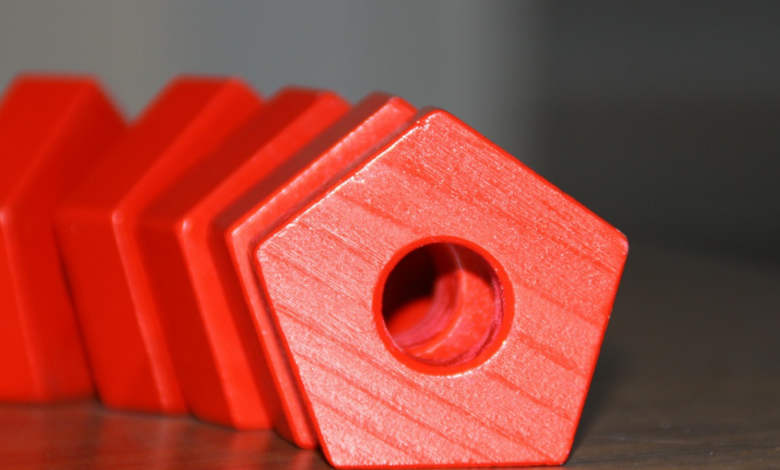shape:yl6axe4-ozq= pentagon

The pentagon shape is more than just a geometric figure; it’s an emblem of structure and harmony. With five distinct sides and angles, this captivating form has fascinated mathematicians, architects, and artists alike for centuries. Its unique design offers both aesthetic appeal and practical applications in various fields. Whether you’re gazing at a star or contemplating the architecture of the Pentagon building itself, one thing is clear: pentagons are everywhere! Let’s dive into the rich history, characteristics, and real-world uses of this intriguing shape that continues to inspire creativity around us.
History and Symbolism of the Pentagon
The history of the pentagon shape stretches back to ancient civilizations. It has been used in various cultures for its aesthetic appeal and geometric significance. The five-sided figure resonates with harmony and balance.
Symbolically, the pentagon often represents life, health, and the human experience. Its five sides can be linked to important elements like earth, water, fire, air, and spirit. This association lends it a mystical aura.
In modern times, the Pentagon building in Arlington is an emblem of defense and authority. Constructed during World War II, this architectural marvel conveys strength through its unique design.
Artists and architects have also drawn inspiration from this polygonal form throughout history. Its versatility allows it to appear in everything from paintings to urban planning projects across diverse landscapes around the globe.
Characteristics of a Pentagon
The pentagon is a fascinating geometric figure with five sides and five angles. Each interior angle measures 108 degrees, creating a unique balance within the shape.
Its symmetrical nature contributes to its aesthetic appeal. The regular pentagon has all sides equal in length, making it pleasing to the eye. This uniformity allows for various applications in design and architecture.
Pentagons can also be irregular, where sides and angles vary. This flexibility adds versatility in artistic expressions or structural designs.
In addition to appearances, the pentagon exhibits intriguing mathematical properties. For instance, it can be divided into triangles without losing its integrity.
This shape often appears in nature too—think of flowers like daisies or starfish that exhibit pentagonal symmetry. Its presence signifies beauty and harmony across different contexts.
Real-Life Applications of the Pentagon Shape
The pentagon shape appears in various real-life applications, showcasing its versatility and aesthetic appeal. From architecture to graphic design, this five-sided figure captivates attention.
In urban planning, the Pentagon building in Arlington, Virginia, stands as a prime example of its significance. This iconic structure symbolizes defense and authority while embodying efficient use of space.
Additionally, pentagon shapes can be found in nature. The arrangement of flowers or certain crystals often reflects this fascinating geometry.
In product design, many companies utilize the pentagon for logos and branding due to its strong visual impact. It conveys stability and balance—qualities that resonate with consumers.
Even sports fields sometimes adopt a pentagonal layout to optimize play areas effectively. This unique shape enhances both functionality and aesthetics across diverse settings.
How to Draw a Perfect Pentagon
Drawing a perfect pentagon can be an enjoyable challenge. Start by gathering your materials: a compass, ruler, and pencil.
Begin with a circle. This will help define the outer limits of your pentagon. Use the compass to draw it on paper, ensuring it’s sturdy yet not too dark.
Next, mark five evenly spaced points along the circumference. You can achieve this by dividing 360 degrees by five, resulting in 72-degree segments.
Now connect these dots using your ruler. Draw straight lines between each point until you form the distinct shape of a pentagon.
For precision, double-check all angles and side lengths after drawing. Adjust any uneven edges for that polished look!
Feel free to experiment with different sizes or add embellishments once you’re satisfied with your basic shape. Happy drawing!
Fun Facts about the Pentagon
The Pentagon, a striking architectural marvel, is not just the headquarters of the U.
S. Department of Defense. It’s also one of the largest office buildings in the world.
Did you know it has five sides? Each angle contributes to its iconic shape. This design allows for an impressive 17 miles of corridors inside!
Interestingly, it houses around 23,000 military and civilian employees daily. That’s a bustling mini-city dedicated to national security.
Architecturally speaking, construction began on September 11, 1941. Remarkably, it was completed just over a year later—on January 15, 1943.
After the tragic events of September 11th, 2001, significant renovations took place to enhance safety features while preserving its historical essence.
The Pentagon Memorial honors those lost that day with unique benches representing each victim—a poignant reminder within this powerful structure.
Conclusion
The pentagon shape holds a unique place in design, mathematics, and architecture. Its five sides create a sense of balance and symmetry that is both appealing and functional. The history behind the pentagon reveals its deep roots in various cultures, often symbolizing strength and unity.
In our everyday lives, we encounter the pentagon in numerous forms—from traffic signs to architectural masterpieces. Understanding how to draw this geometric figure can enhance your artistic skills while unlocking new creative avenues.
Fun facts about the pentagon remind us of its fascinating nature; for instance, did you know it can be found not only on paper but also within nature?
Exploring the world of shapes like the pentagon opens up endless possibilities. So whether you’re an artist or just someone who appreciates geometry, embracing the beauty of the pentagon can inspire creativity in many areas of life.




